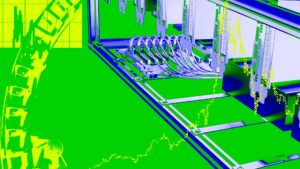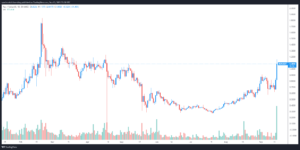This article on Trading Tools is the opinion of Optimus Futures.
Clutter breeds confusion – the last thing any trader wants.
Profitable trading requires discipline.
Hanging onto old trading tools isn’t just a waste of time and resources, it can also impair your profitability.
In this article, we dive into the why and how of a trading tool audit.
You may not realize how much you are missing.
Why you should perform a technology stack audit
Think of a truck driver.
A speedometer, tachometer, fuel gauge, and clock are essential to job performance.
What about a weather radar?
Makes sense when you live in regions near an ocean.
In Arizona, not so much. An outside thermometer works better.
A long-haul driver that goes coast to coast might pick up various tools from on-board navigation to weight gauge.
Take that same driver and make him run local deliveries.
Now that he deals with heavy local traffic versus the open highway.
Chances are he accumulated instruments and tools that are no longer useful.
More to the point, those same tools are wasted money and could compromise the driver’s attention.
Like the driver, we as traders collect items along our journey.
An old indicator here.
An excess data feed there.
In a profession where critical decision-making matters, streamlining your technology is imperative.
Everyone should evaluate their trading tools
How many times have you missed a trade because one indicator didn’t support the setup?
How many times have you entered a trade because one indicator flashed a strong signal?
Most of us experienced one or both of these in our careers.
But have you ever stopped to ask whether those signals were useful?
As we move along our trading journey, we study different techniques and test ideas, refining our approach along the way.
Yet, most of us can open our platform and find relics of a strategy we dismissed long ago.
These ghosts clutter screens, distracting us from executing a well-honed strategy.
It doesn’t matter whether you’re a prop shop trading firm or a lone retail player.
Trading is a business built on risk management and discipline. Anything that hinders our ability to turn a profit is, by definition, a cost.
Sometimes they’re obvious.
Sometimes they’re hidden.
Goals of a technology stack audit
Your trading tools audit aims to enhance your profitability.
A Bloomberg Terminal is a great example. A one-year subscription runs ~$25,000.
Does this make sense if you are primarily a technical trader?
The terminal certainly has a rich set of data and news.
But it doesn’t necessarily align with a technical trading style.
Direct cost isn’t the only consideration.
Excess indicators and feeds can slow down performance and execution, leading to missed opportunities and order placement.
An audit of your trading tools streamlines what you have and identifies missing resources.
The process should focus on one or more of the following:
- Cutting down direct costs – Paying for excess feeds, high commissions, and platforms is one of the best reasons to perform an audit.
- Saving time – Time and profit go hand in hand. Even a few minutes saved for a swing trader can add several more trades over a year. For time-sensitive day traders, a few minutes can be a gamechanger.
- Enhance decision making – Acquiring and using the right trading tools and technology improves the number and quality of the trades we take.
- Improve order execution – Order execution should matter to traders whether you make one or a hundred trades per day. The right trading tools not only help you obtain better entries and exits, but they can also be equally as valuable in keeping you out of bad trades.
Not all of these apply equally to everyone.
But as you’ll see, this is only one part of the process.
Step 1 – Strategy alignment
A technology audit needs to be viewed through the lens of your current strategy.
You need a clear definition to create this framework.
A great way to think about this is to pretend you are explaining your strategy to a friend.
For example.
I day trade index futures using a scalping strategy. Each trade lasts only a few seconds and relies on a set of three technical indicators. However, I do look at higher-time-frames for context.
While this may not seem overly specific, it quickly eliminates all feeds and indicators that don’t further this objective.
Think of your trading strategy as your business plan. It creates the blueprint you follow to successfully profit from the market.
Trading technology and tools need to align with your strategy.
That means looking at what you have as well as what you need.
For example. An order flow trader starts off using VWAP and time and sales data. As they progress, they might find cluster charts (AKA footprints) an instrumental tool in their development.
Yet, it’s unlikely they would find much use in a high-quality newsfeed.
The bottom line is that everything you use and display must further your trading in some way.
Step 2 – Evaluate the trading tools you use
Start your audit by grouping your trading tools in the following graph:
While simple, this diagram can help you prioritize which areas to focus on first.
This is a quick list of items review in your audit:
- Data feeds
- Commissions
- Platform
- Indicators
- Programmability
- Hardware required
Visual graphs like these and be done on paper as well.
The point is to help you quickly identify areas of opportunity.
In this example, an expensive old chat room is rarely used.
Seems like a good place to save some money.
Note: Trading commissions are relative to the cost between brokers. In many cases, you can’t get around them. However, the more trades you execute, the more commission structure will matter to you.
Many platforms will include indicators by default.
Even if they are free, if you rarely use them, they should be cut from your charts.
Free indicators that you use ‘sometimes’ fall into a gray area.
At that point, you should first ensure you actually obtain value from them. Just because you use them doesn’t mean they help.
Assuming you do find value but use it sparingly, consider creating a workspace that aligns with these types of indicators.
Grouping rarely used trading tools into a separate area declutters your main workspace yet provides you with a single point to find them.
Step 3 – Uncover opportunities with a trading journal
Trading is as much about what you don’t know as what you do know.
New techniques, indicators, and technology come to market all the time.
We can fail to explore their full potential.
At the same time, you don’t need to try them all out immediately.
Here are three steps to help you uncover opportunities:
- Create a journal of ideas and techniques you want to explore.
- Design a process to evaluate, research, and explore items on your list.
- Schedule a regular time aside from trading for this specific work.
This structure provides a rigorous, emotion-free way to evaluate and grade an idea.
Additionally, your process should research the available tools and compare them to what you currently have, looking for gaps.
Getting the most out of your audit
Starting a trading technology audit can seem like a daunting task. Especially when you don’t know where to start.
Let’s first set a basic framework to evaluate everything using three basic questions:
- How often do or would I use this?
- What does it do for me?
- Does it add value?
- Average Day – Walk through a typical trading day and list everything you touch and see. Then go back through your list asking yourself the three questions above in the context of your strategy.
- Technical Setups – A great way to assess your technology is through a technical analysis audit. Using the technical analysis framework helps you not only determine which indicators are useful but where you are missing key information.
- Wish List – We all want that magic indicator that tells us when to enter and exit a trade. What might that look like? This thought experiment is extremely useful in finding areas of opportunity.
Consult an expert to find out what trading tools you need
At the end of the day, nothing replaces a good old-fashioned experience.
We’re talking about people who not only know the process but how you can get the most out of it.
An objective outside perspective can help you organize and plan your approach, mapping out your current versus.
Consultations are a great place to start.
Optimus Futures sits in a unique position.
Our flexible infrastructure combined with access to multiple 3rd party platforms, data feeds, and clearing options can help traders acquire the ideal combination of tools for success.
Source: https://optimusfutures.com/tradeblog/archives/identify-trading-tools-you-no-longer-need/%20- "
- 000
- access
- All
- analysis
- AREA
- arizona
- around
- article
- audit
- BEST
- Bloomberg
- bloomberg terminal
- brokers
- business
- business plan
- careers
- cases
- Charts
- clutter
- commission
- confusion
- Costs
- Creating
- Current
- data
- day
- Deals
- Decision Making
- Deliveries
- Development
- driver
- execution
- Exit
- experience
- experiment
- Firm
- First
- flow
- Focus
- follow
- Framework
- Free
- Fuel
- full
- Futures
- good
- gray
- great
- here
- High
- How
- HTTPS
- idea
- identify
- index
- information
- Infrastructure
- IT
- Job
- keeping
- Key
- leading
- Line
- List
- local
- Long
- Making
- management
- Market
- Matters
- money
- move
- Navigation
- Near
- news
- ocean
- open
- Opinion
- opportunities
- Opportunity
- Options
- order
- Paper
- People
- performance
- perspective
- platform
- Platforms
- player
- Profit
- profitability
- quality
- radar
- reasons
- research
- Resources
- retail
- review
- Risk
- risk management
- Run
- sales
- sense
- set
- Simple
- So
- start
- Strategy
- Study
- subscription
- success
- support
- talking
- Technical
- Technical Analysis
- Technology
- tells
- test
- time
- touch
- trade
- trader
- Traders
- trades
- Trading
- traffic
- truck
- uncover
- us
- value
- Versus
- WHO
- Work
- works
- year






